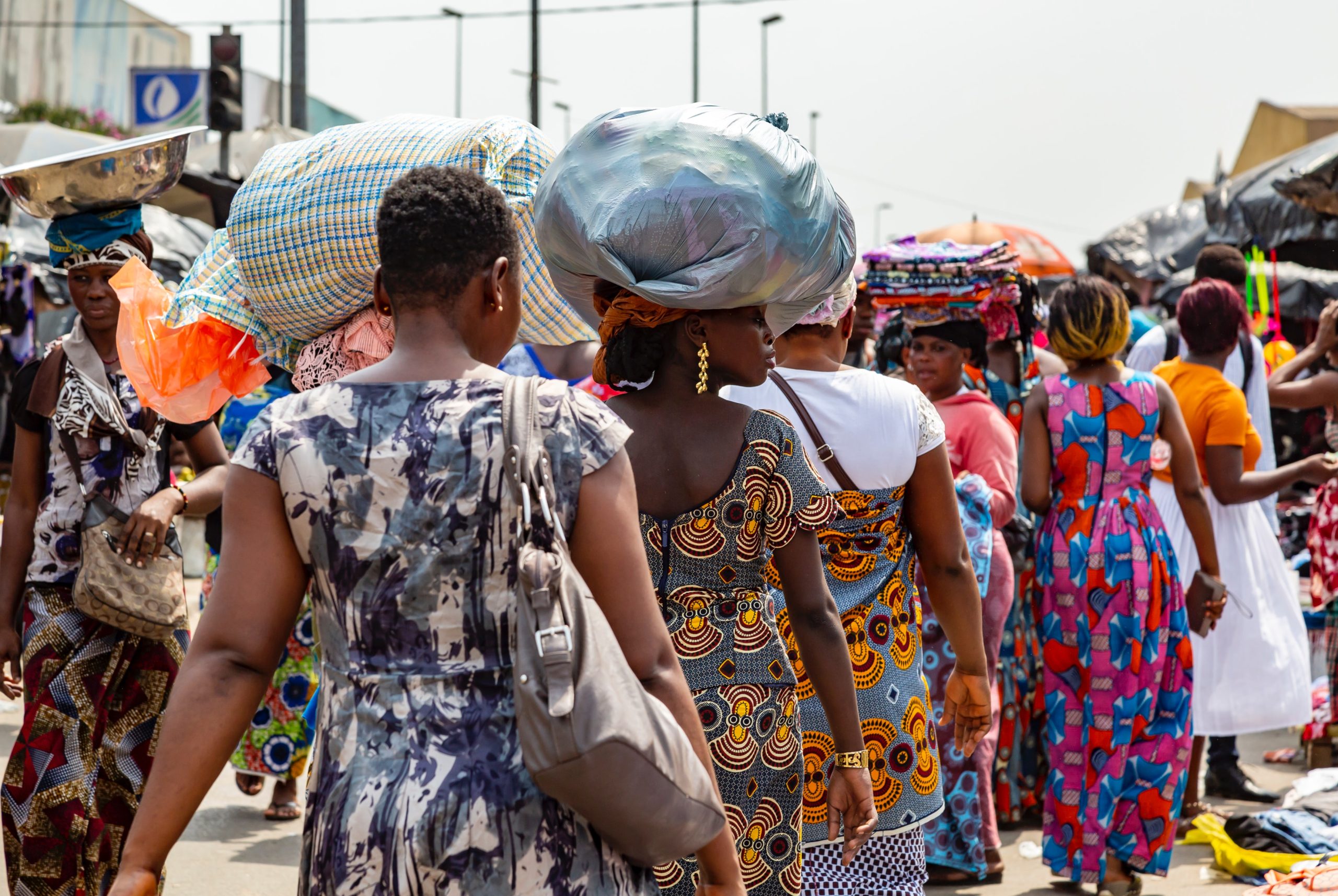29 Sub-Saharan Africa:
Economic Geography I –
The Origins of Poverty
As is discussed in the overview of Sub-Saharan Africa, it is by far the world’s poorest region. While there is no single or simple explanation for this, the best place to begin is colonization. Europe’s imperial powers spent multiple centuries plundering the continent of its resources. Millions of enslaved humans and an incalculable trove of natural wealth were siphoned from the region, impoverishing Africans and enriching Europeans. And although the colonial period largely came to an end in the 1960s, the economic system established during colonization still plagues Sub-Saharan Africa.
Unlike the European settler colonies that would eventually become countries such as the United States, Canada, and Australia, most Sub-Saharan African colonies were primarily mercantile colonies – areas that were designed to export raw materials to the colonizing country. Raw materials are unfinished natural resources, such as copper, diamonds, iron, oil, coffee, cacao, and tobacco. As a bonus for the colonizer, Sub-Saharan also became a captive market for European manufactured goods. Raw materials extraction, although a profitable enterprise, does not generate nearly the same levels of wealth as other sectors of the economy, such as manufacturing, services, and information. Put simply, during the colonial period Sub-Saharan Africa exported cheap things and imported expensive things, putting the region on the short end of the stick, economically speaking.
Independence did little to change that. Most countries in the region still export raw materials for a living, and the remain dependent upon the wealthy world for manufactured goods, technology, and scientific and economic expertise. Sub-Saharan Africa is still exporting cheap things and importing expensive things. It is still on the short end of the stick. This situation is called “neo-colonialism” – a new form of colonization.

In addition to creating poor terms of trade for Sub-Saharan Africa, this economic dependence on the export of raw materials also creates tremendous inequality. Most of the profits from raw materials extraction ultimately go to wealthy landowners, commodities brokers, and foreign buyers. Only a tiny fraction of the profits goes to the workers who are actually harvesting the raw materials. Worse still, many countries in region are extremely dependent upon the extraction of just one or two kids of raw materials, and the prices and demand for raw materials are extremely volatile.
Anyone who regularly fills the tank of their car knows that the price of gasoline can vary tremendously from one month to the next, or even from one day to the next. This is reflection of the volatility of the price of oil. The price of nearly all raw materials, from vanilla to uranium, is similarly variable. In large, diverse, complex economies like the United States, this is not an issue which usually effects the whole of the population. If, for example, the price of corn skyrockets or plummets, it will have serious ramifications for Midwestern farmers, but will have only marginal impacts on everyone else in the country. But in Sub-Saharan Africa, where whole economies are dependent on one or two commodities, nearly everyone in a country is affected by such boom-and-bust cycles.
Two recent examples of such volatility can be found in Zambia and Nigeria. Copper accounts for 70% of Zambia’s export revenue. In the early 2000s, as China’s manufacturing sector was expanding rapidly, its demand for copper soared, and so did Zambia’s economy. Over the last decade, however, China’s economy cooled, and so has its need for Zambian copper. As a result, Zambia is experiencing one of the greatest economic contractions of any country on earth. In Nigeria, the economy is driven by oil, which accounts for 80% of the country’s export revenue. In 1998, the average price of a barrel of oil was $21. In 2008, it was up to $156. In 2020, it was back down to $22. In 2022, it shot up to $116. When four-fifths of a country’s economy is pegged to a commodity with such boom-and-bust tendencies, that economy is going to be inherently unstable.
In the 1960s, newly independent countries in Sub-Saharan Africa were beset with a number of problems – the lingering structural issues created by colonization, as well as interethnic conflicts that were further stoked by the Cold War. Nevertheless, soaring raw materials prices fueled economic optimism in the region, and many of its governments took out trillions of dollars in loans from the international community to fuel economic development projects. Unfortunately, in the 1970s and 1980s, the prices for Sub-Saharan raw materials collapses, and by the 1990s, many African countries were carrying a staggering load of debt. In the early 2000s, many countries in the region were spending more on debt payments than they were on health care and education combined. An already bad economic situation was made worse.
Finally, another major reason why Sub-Saharan countries remain badly impoverished comes down to a fundamental rule of economics – the easiest way to make a lot of money is to already have a lot of money. To use an example from the microeconomic level, if a typical American wanted to make a lot of money, it would be wise for them to attend an Ivy League university, move in elite social circles to build professional connections, land a high-paying job, and then invest heavily in stocks and real estate. These are the sorts of things that Americans born into wealth often do, but that isn’t exactly a path open to most working-class people.
The same is true in macroeconomics. A government wishing to expand its economy would be wise to invest heavily in physical infrastructure – in airports, seaports, railroads, highways, bridges, dams, canals, levees, and utilities like communications, electricity, gas, and water. To ensure a stable and productive workforce, countries should also invest heavily in human infrastructure – in education, training, agriculture, health care, public safety, social welfare, and environmental conservation. Successful countries also work to create a stable economic infrastructure through financial regulation and supervision, and invest heavily in scientific and technological research to remain innovative. Wealthy countries regularly make these kinds of investments in their economic future. Sub-Saharan African governments are certainly interested in doing the same thing, but it costs money that they simply do not have.
Of course, investments from foreign companies and governments could fund some of these initiatives, but Sub-Saharan Africa is not generally a favorite investment opportunity in the international community. The boom-and-bust cycles that create economic instability, the undereducated workforce, endemic political conflict, government corruption, and a lack of available infrastructure all steer potential investors away from the region.
Did you know?
Consider the United Nations’ Sustainable Development Goals – Goal 1: End poverty in all its forms everywhere.
My Turn!
CITED AND ADDITIONAL BIBLIOGRAPHY:
Blue, Eva. Adjamé Market, Abidjan, Ivory Coast. Photo, 15 Mar. 2019, https://unsplash.com/photos/4k-v1yGHoQ4.



